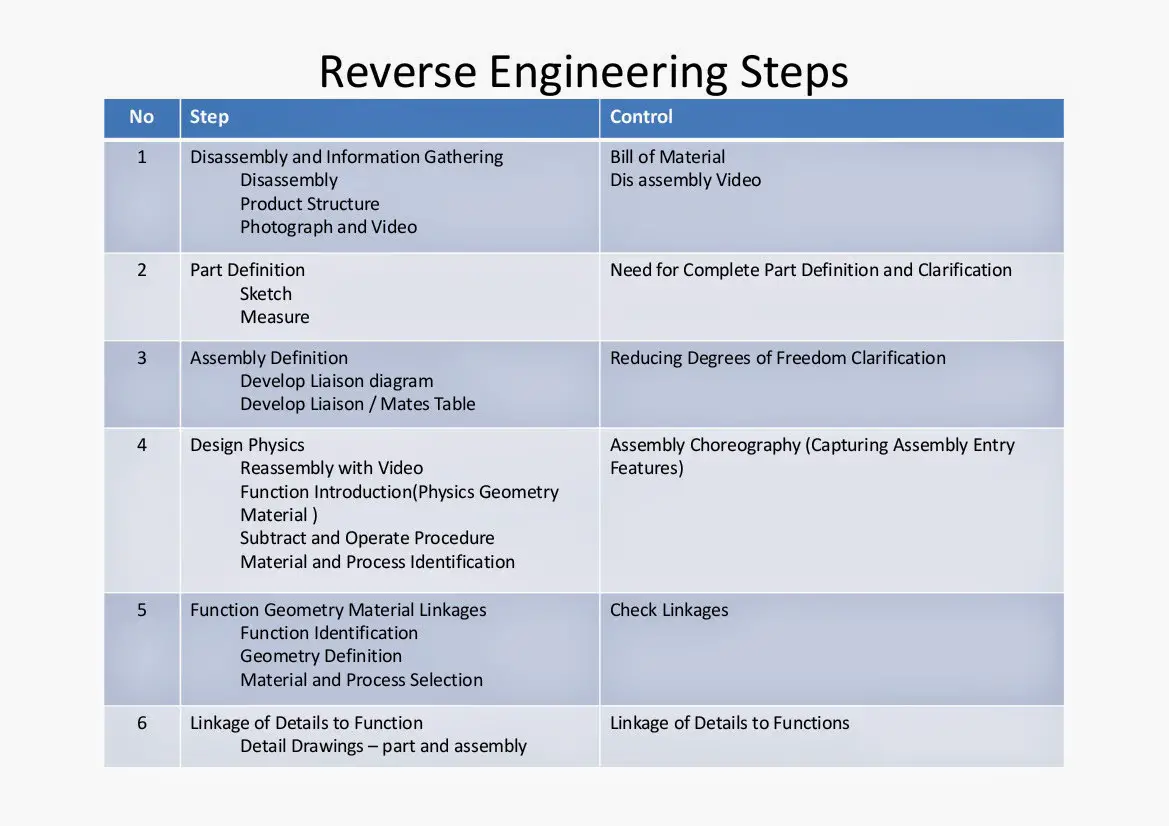Reverse engineering is the process of taking an existing product or system and analyzing its structure, function, and operation in order to create a new product or system that has similar or improved functionality. This process can be used to gain insight into the inner workings of a product, identify potential improvements, and develop new products that are more efficient, reliable, and cost-effective.

In the field of technology, reverse engineering has been a powerful catalyst for change, driving innovation and pushing the boundaries of what is possible. By examining existing products and systems, engineers and researchers can identify areas for improvement, learn from past successes and failures, and develop new approaches to solving problems.

One of the most significant impacts of reverse engineering has been the rapid advancement of computer technology. By studying the design and architecture of existing computers, engineers have been able to develop new computers that are smaller, faster, and more powerful. This process has led to the development of personal computers, laptops, tablets, and smartphones, which have revolutionized the way we live and work.

Reverse engineering has also played a crucial role in the development of software. By analyzing the code of existing software programs, programmers can identify vulnerabilities, improve performance, and add new features. This process has led to the development of new software tools, operating systems, and applications that have made our lives easier and more productive.
In addition to the advancement of computer technology, reverse engineering has also had a profound impact on other fields, such as manufacturing, automotive, and medical technology. By studying the design and function of existing products, engineers have been able to develop new products that are more efficient, reliable, and user-friendly.
Overall, reverse engineering has been a powerful catalyst for change in technology, driving innovation and pushing the boundaries of what is possible. By examining existing products and systems, engineers and researchers have been able to identify areas for improvement, learn from past successes and failures, and develop new approaches to solving problems. This process has led to the development of new products and technologies that have revolutionized the way we live and work.


It is very important to understand how reverse engineering can be a catalyst for change in technology. This article provides a great overview of the topic and I encourage everyone to read it.
I’m not sure I agree with the article’s conclusion that reverse engineering is always a good thing. I think it can be dangerous in the wrong hands.
The article provides a useful overview of the history of reverse engineering. I found it to be very informative.
I disagree with the author’s claim that reverse engineering is only used for malicious purposes. I think it can be a valuable tool for legitimate research and development.
I found the article to be a bit ironic. The author talks about how reverse engineering can be used to improve technology, but then he goes on to say that it can also be used to create weapons.
I found the article to be very sarcastic. The author clearly has a strong opinion about reverse engineering, and he doesn’t seem to be interested in hearing from anyone who disagrees with him.
I found the article to be very funny. The author’s use of humor to make his points was very effective.
I found the article the be be very stupid. The author should does not not what he is talking about.
I did enjoy reading the article, but I do not agree what the author is saying in there.
I did laugh really hard when reading the article. The author did a great job on point his out.
I did find interesting the notion the article is referring to. I did agree in major parts of it. Not all, however, it opened my mind.
I did no understand the article. Maybe you could be more clear in you writing next time.